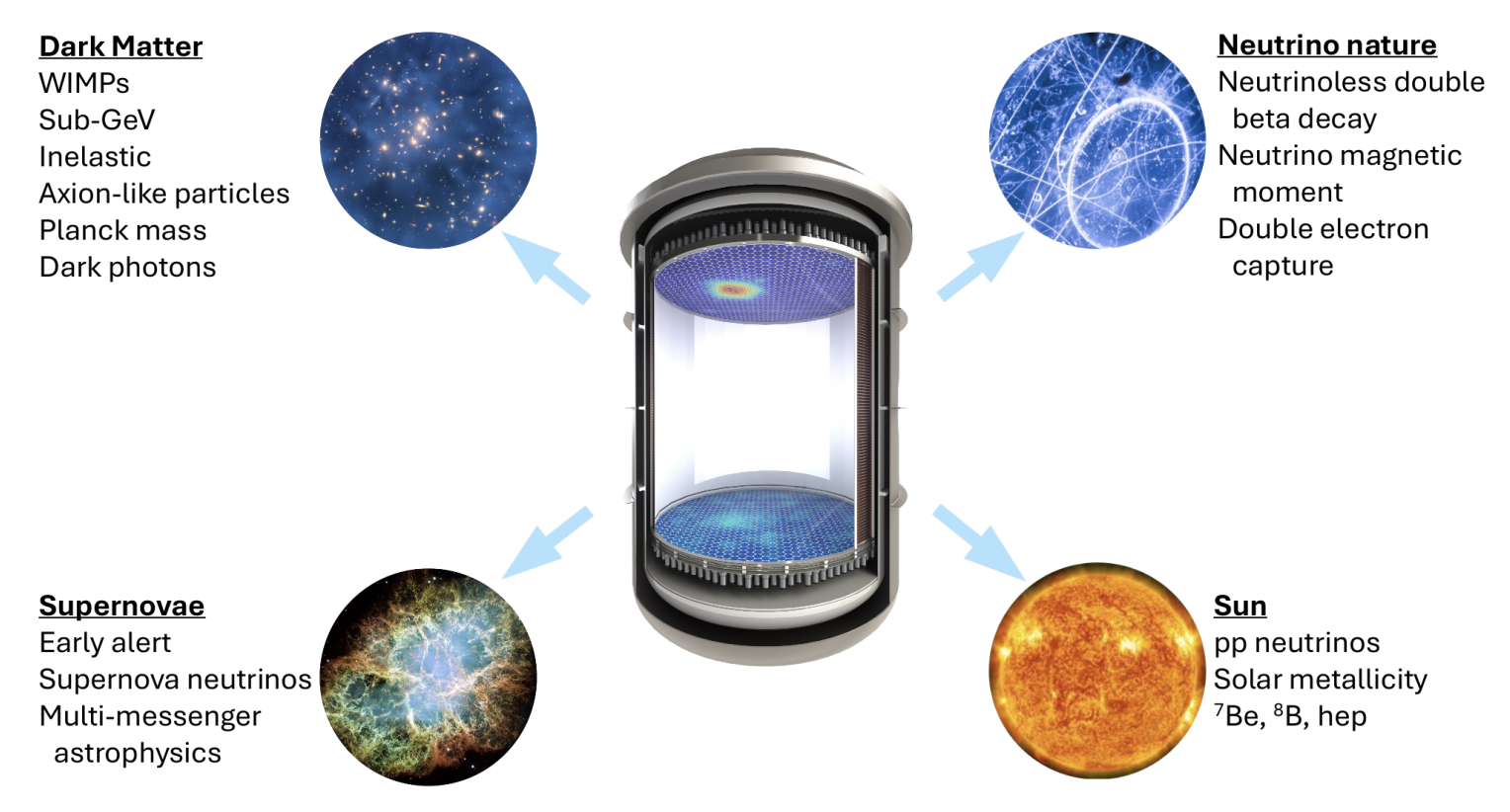XLZD: The Ultimate Dark Matter Detector
While LZ marches on in the search for galactic dark matter in the form of Weakly Interacting Massive Particles (WIMPs), a plan already exists to construct a Xe-based 'Generation-3' or 'G3' experiment that will probe WIMP hypotheses all the way down to the irreducible background that comes from neutrinos from the sun, the atmosphere and supernovae: i.e. the neutrino fog. The world's biggest Xe-based dark matter collaborations—XENON, LZ, and DARWIN—will consolidate their resources, forming a global liquid Xe dark matter program called XLZD.
XLZD guarantees a fundamental change in astroparticle physics. If LZ or its competitors detect evidence of a WIMP signal, XLZD will yield high statistics confirmation of that signal, with potential to reach the 5σ significance threshold required to claim an official discovery. If the current generation of experiments don't find evidence of a WIMP signal, XLZD will either be the first experiment to discover WIMPs, or rule out the remaining electroweak WIMP parameter space above the neutrino fog.

XLZD will leverage UK expertise in two-phase liquid xenon TPC technology in order to construct a truly mammoth detector; scaling up from the size of LZ by an order of magnitude. With a 40-80 tonne target and backgrounds two orders of magnitude lower than LZ, the discovery potential in XLZD for new physics ‘beyond the Standard Model’ (BSM) will be extraordinary. This is by no means limited to WIMP dark matter, as the XLZD program will be competitive in the search for a variety of rare astroparticle physics signals; e.g. sub-GeV dark matter, axion-like particles, 136Xe neutrinoless double-beta decay, and supernova neutrinos as part of the Supernova Neutrino Early Warning System (SNEWS2.0). UCL will be one of the UK's leading institutions in optimising the XLZD detector as a rare event observatory for the broadest range of new physics and BSM searches.

One of the primary contributions of UCL towards the construction of XLZD is leadership of the critical radio-assay and material selection campaign that ensures radio-pure construction of the experiment and delivers the key Monte Carlo simulations and high-precision background model for all subsequent physics, including WIMPs and neutrinoless double beta decay searches. A major part of this work involves developing innovative methods for manufacture of the XLZD detector components underground whilst delivering the unprecedented levels of purity and cleanliness required to reach the science XLZD can deliver.
